![]()
Foreword
BOSTON furniture of the eighteenth century has long interested informed collectors and students of furniture history. Yet, no book has been devoted to the subject. While catalogues and scholarly works have appeared on the eighteenth-century furniture of New Hampshire, Rhode Island, Connecticut, New York, New Jersey, Pennsylvania, Maryland, and South Carolina,1 little has been written on Massachusetts and particularly Boston. Today such an obvious research need in the field of American art does not long remain fallow. Even before this book was begun, preliminary work had commenced. In 1948 Mabel Swan published the first major list of Boston craftsmen.2 Subsequent researchers such as Richard Randall, Benno Forman, and Vernon Stoneman have contributed to the picture of the Boston furniture industry.3 More recently four students in the Winterthur Program in Early American Culture, Brock Jobe, Margaretta Lovell, Gilbert Vincent, and Mary Ellen Yehia, began to examine various aspects of the subject.
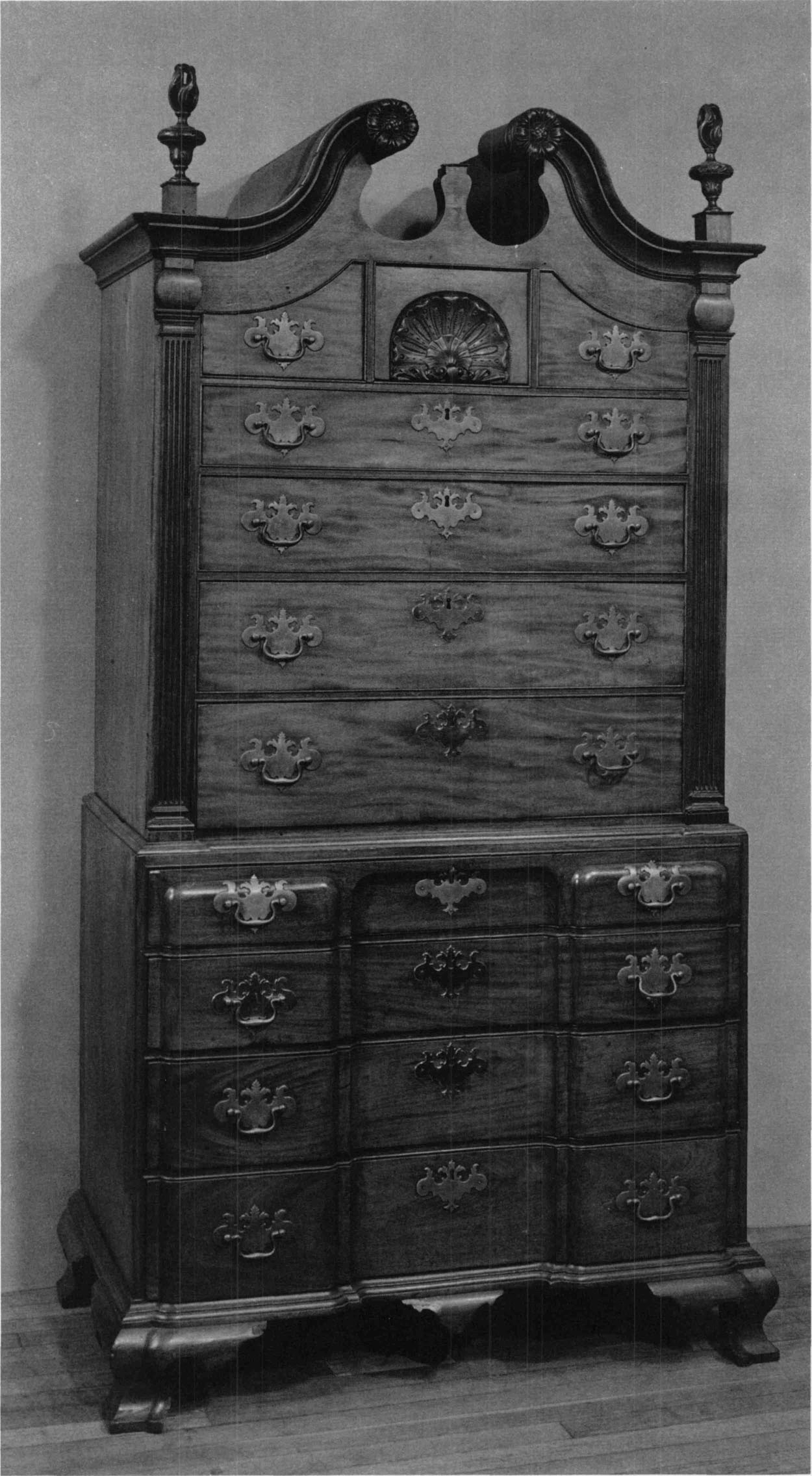
1. Chest-on-Chest. Made by Benjamin Frothingham (paper label), Charlestown, Massachusetts, c. 1765–1790. Mahogany and white pine; h. 88⅜ inches, w. 45¼ inches, d. 25 inches. (Private collection.)
In 1972 the Colonial Society of Massachusetts offered to sponsor the conference “Boston Furniture of the Eighteenth Century” as their second annual meeting on early New England culture. At their first conference, chaired jointly by Sinclair Hitchings and Walter Muir Whitehill, eight papers were presented on Boston prints and subsequently published in Boston Prints and Printmakers 1670–1775, volume 46 of the Publications of the Colonial Society of Massachusetts. For the furniture conference, the Colonial Society turned to the newly established Department of American Decorative Arts and Sculpture at the Museum of Fine Arts, Boston. Jonathan Fairbanks, Curator of the Department, with the encouragement and advice of Walter Muir Whitehill, developed the format for the conference. Eight speakers were invited and an exhibition of Boston furniture was planned to coincide with the conference. Although focussing on Boston proper, the co-ordinators of the conference chose to include a paper on Benjamin Frothingham of Charlestown because of the numerous pieces of extant furniture signed or labelled by this important Boston area craftsman (fig. 1).
On May 11, 1972, the conference opened at the headquarters of the Colonial Society at 87 Mount Vernon Street. After introductory remarks by Walter Muir Whitehill, papers were presented by Brock Jobe and Mary Ellen Yehia. During the afternoon, conference members moved to the Museum of Fine Arts to hear lectures by Gilbert Vincent and Margaretta Lovell and to view the exhibition “A Bit of Vanity, Furniture of Eighteenth-Century Boston.” Many documented examples were brought together in Gallery T-2, including a William and Mary style slate top table (fig. 2), a desk-on-frame and pier table (fig. 3), both with mask-carved knees, and a blockfront chest of drawers originally owned by Thomas Lamb (c. 1753–1813) of Boston (fig. 4). Unfortunately one of the best-documented and most unusual pieces of Boston furniture, an enormous orrery made by Joseph Pope between 1776 and 1788 (fig. 5), could not be moved from the basement of Houghton Library, Harvard University, to the Museum. Portraits by Robert Feke, Joseph Badger, and John Singleton Copley (fig. 6) enriched the exhibition with views of friendly, confident faces and costly, decorative furniture.
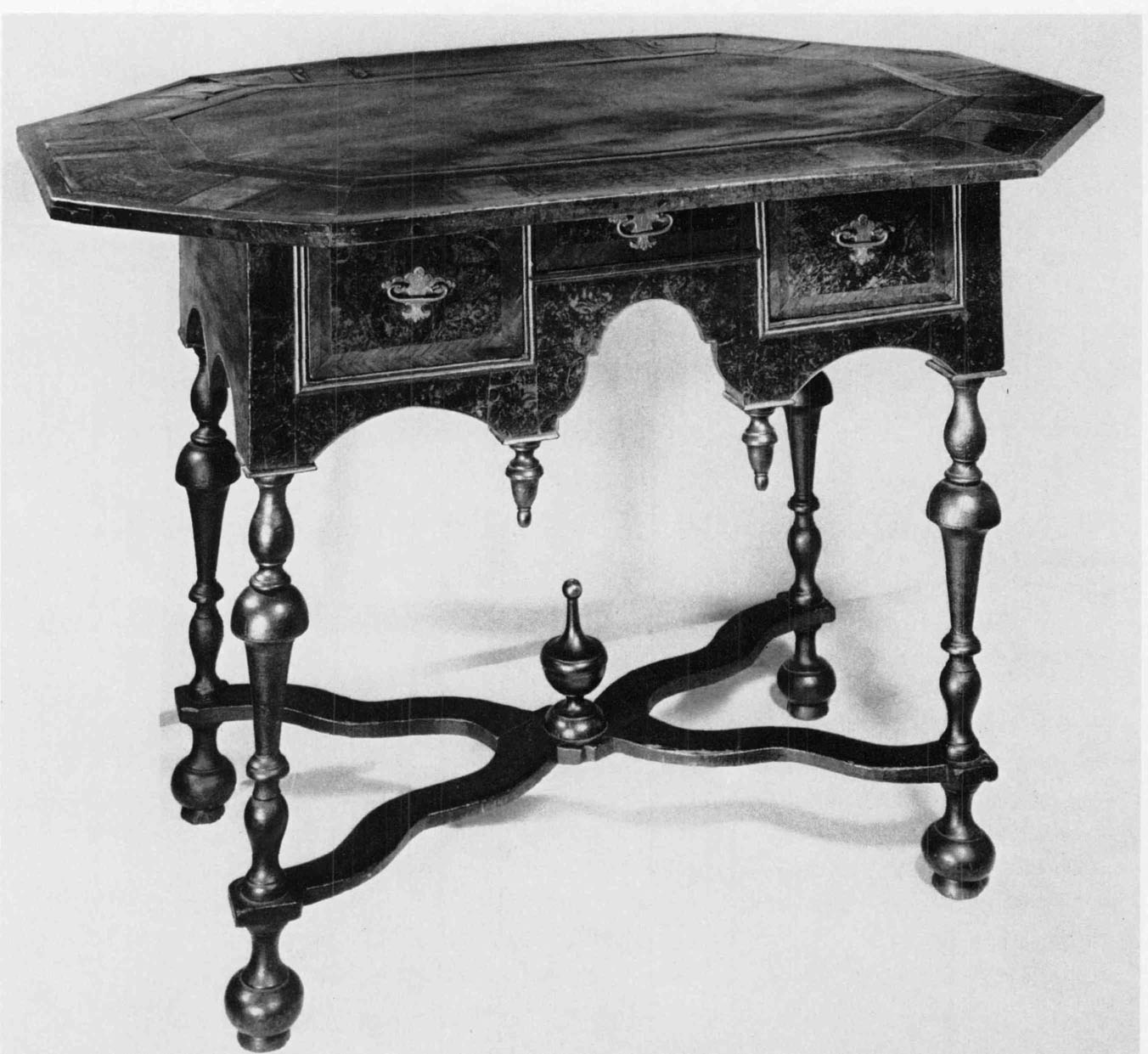
2. Dressing Table. Boston area, c. 1700–1720. Walnut, white pine, and slate; h. 30⅛ inches, w. 44⅛ inches, d. 30¼ inches. (Dietrich Brothers Americana Corporation: photo, Richard Cheek.) According to family tradition, this table was owned by Thomas Hinckley (1618–1706) of Barnstable, Massachusetts.
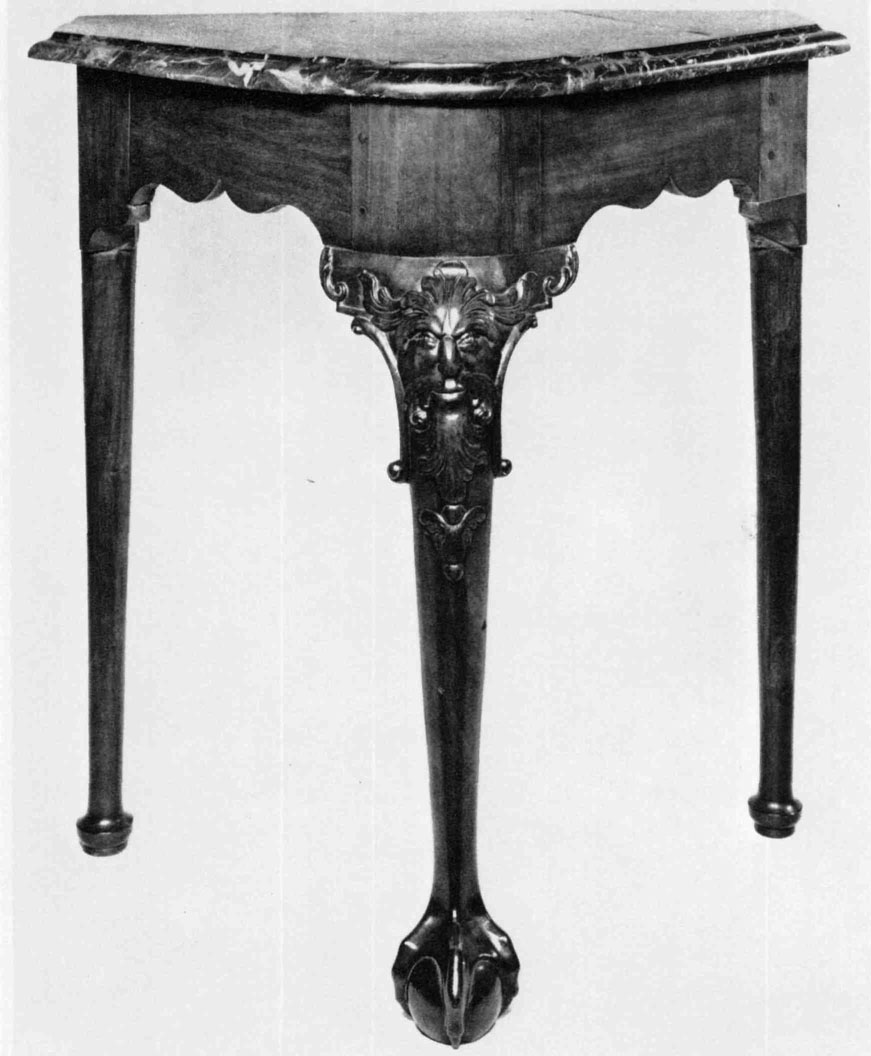
3. Pier Table. Boston area, c. 1740–1770. Mahogany and white pine; h. 29 inches, w. 28½ inches, d. 17⅛ inches. (Museum of Fine Arts, Boston, M. and M. Karolik Collection, 41.586.)
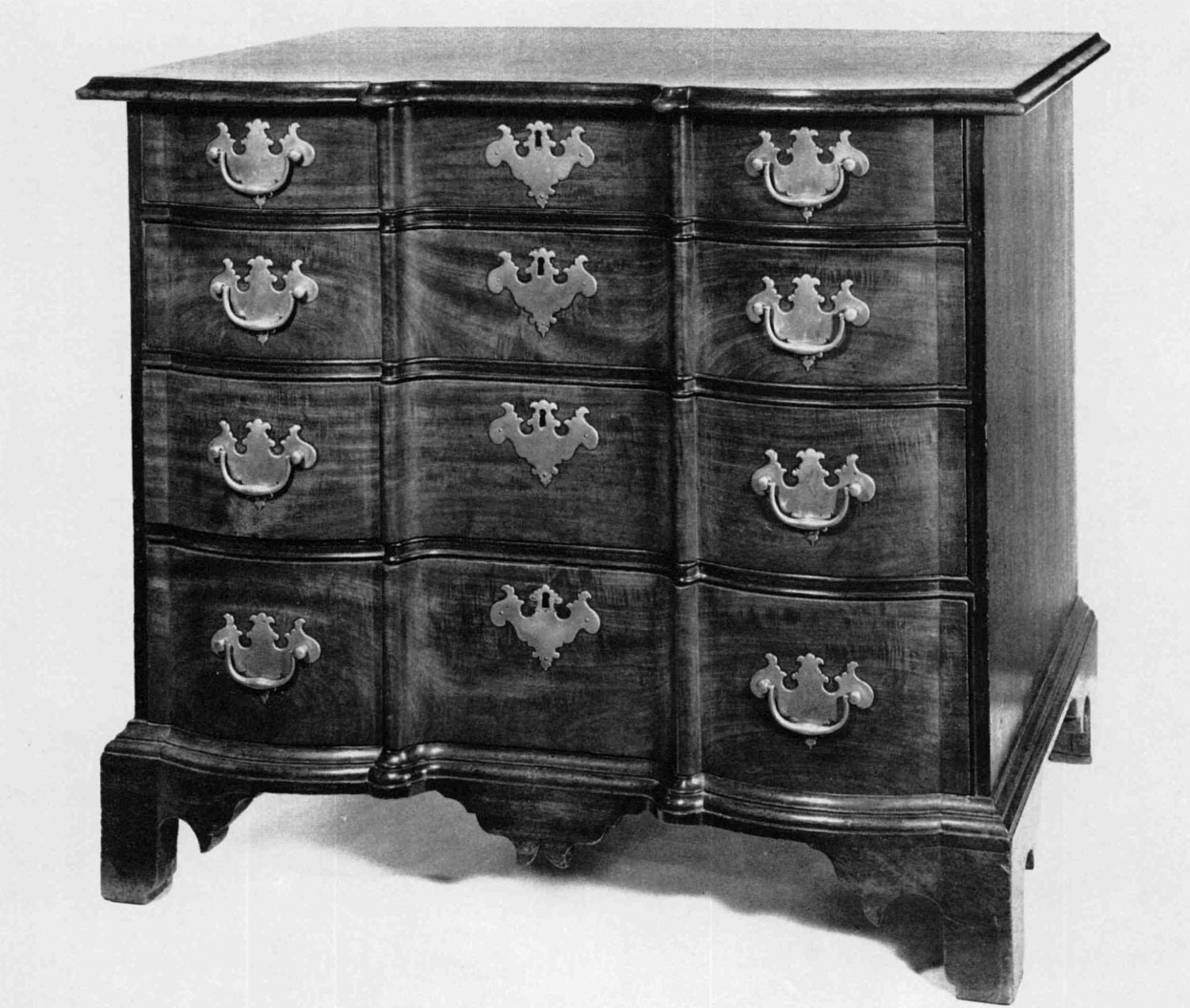
4. Chest of Drawers. Boston, c. 1760–1790. Mahogany and white pine; h. 30 inches, w. 36 inches, d. 21⅜ inches. (Private collection: photo, Richard Cheek.) According to family tradition, this chest was owned by Thomas Lamb (c. 1753–1813), a merchant of Boston.
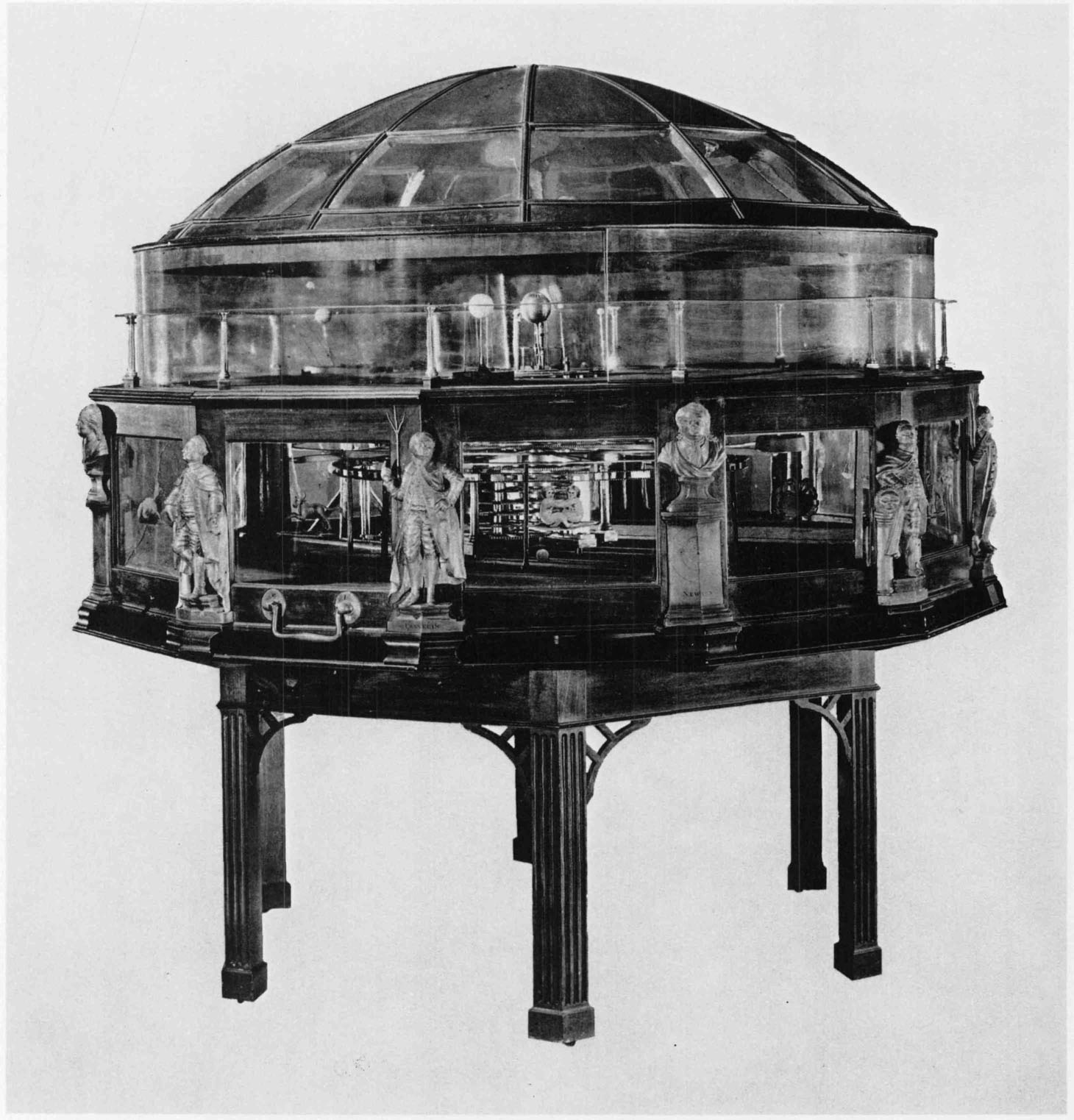
5. Orrery. Made by Joseph Pope, Boston, 1776–1788. Mahogany; h. 78 inches, Diameter 78 inches. (Historical Scientific Instruments Collection, Harvard University.) In March, 1789, Harvard College purchased this orrery from Pope for £450.
On May 12, the participants in the conference returned to the Colonial Society headquarters to listen to papers by Richard Randall, Gordon Saltar, Sinclair Hitchings, and Dean Fales. The conference ended with a luncheon at the Club of Odd Volumes, 77 Mount Vernon Street.
This book, issued as volume 48 of the Colonial Society’s Publications, contains the papers presented at the conference.4 Many were transformed afterwards by additional research stimulated by the lively exchange of thought generated at the conference. A list and bibliography of furniture craftsmen working in Boston during the eighteenth century have been added as appendices.
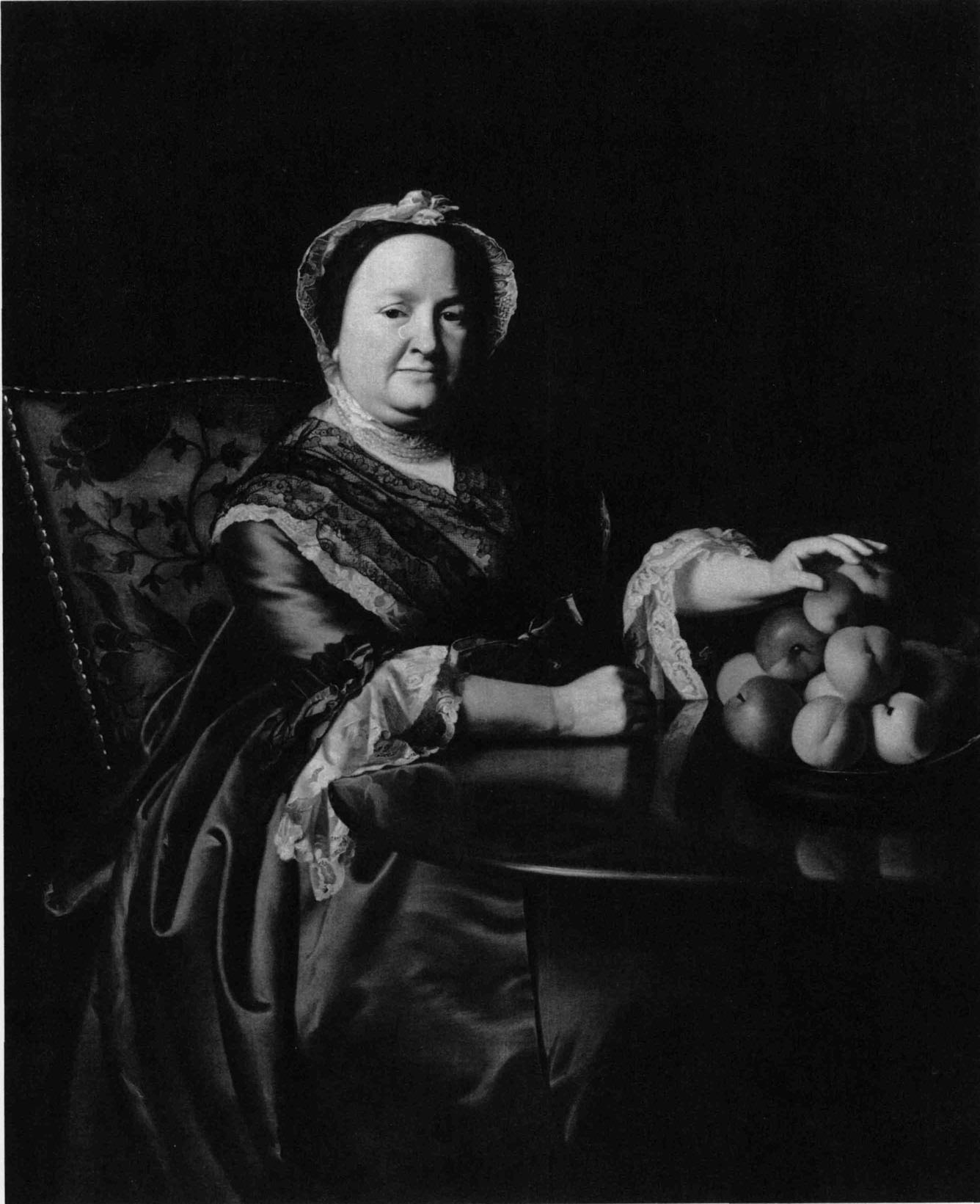
6. Mrs. Ezekiel Goldthwait. Painted by John Singleton Copley, Boston, 1770–1771. Oil on canvas; h. 50 inches, w. 40 inches (excluding frame). (Museum of Fine Arts, Boston, Bequest of John T. Bowen in memory of Eliza M. Bowen, 41.84.)
Photographs of 132 objects appear throughout the volume to amplify the text. While many have been illustrated before, never has such a large number been compiled for one publication. Some are shown here for the first time: a pair of armchairs (fig. 7) owned by Thomas Lamb of Boston and stamped “S.F,” probably the initials of the chairmaker,5 an early blockfront bureau table with string inlay (fig. 18), and a bombé desk and bookcase signed in pencil by Benjamin Frothingham and D. Sprage and dated 1753 (figs. 97 and 162). Partly as a result of the increased interest generated by the conference, one of the most important but rarely seen pieces of Boston furniture, a chest-on-chest signed by John Cogswell, was acquired by the Museum of Fine Arts and is handsomely illustrated in color in figure 125.
The purpose of the conference was to foster comparison and distribution of recent scholarship. In doing so, it provided new insights into Boston eighteenth-century furniture and summarized past information in light of modern discoveries. It also pointed towards further research needs in the field. The study of Federalist Boston (c. 1788–1815) and its furniture has hardly begun. Little is known about the introduction of the neoclassical style in Boston, the influence of Boston furniture of the Federal period on other urban centers such as Salem, and the changing craft practices in late eighteenth-century Boston. For the entire century many questions remain unanswered. What was the relationship between Boston craftsmen and those in surrounding towns? What effect did the Revolution have on the furniture industry? How influential were patrons in determining style changes in Boston? What effect did imported furniture have on Boston styles? This book is but a beginning—a beginning, it should be added, that emphasizes the Queen Anne and Chippendale periods (c. 1725–1788). It is hoped that as a result of this effort more information will become available and eventually a more comprehensive history of the furniture trade will be written.
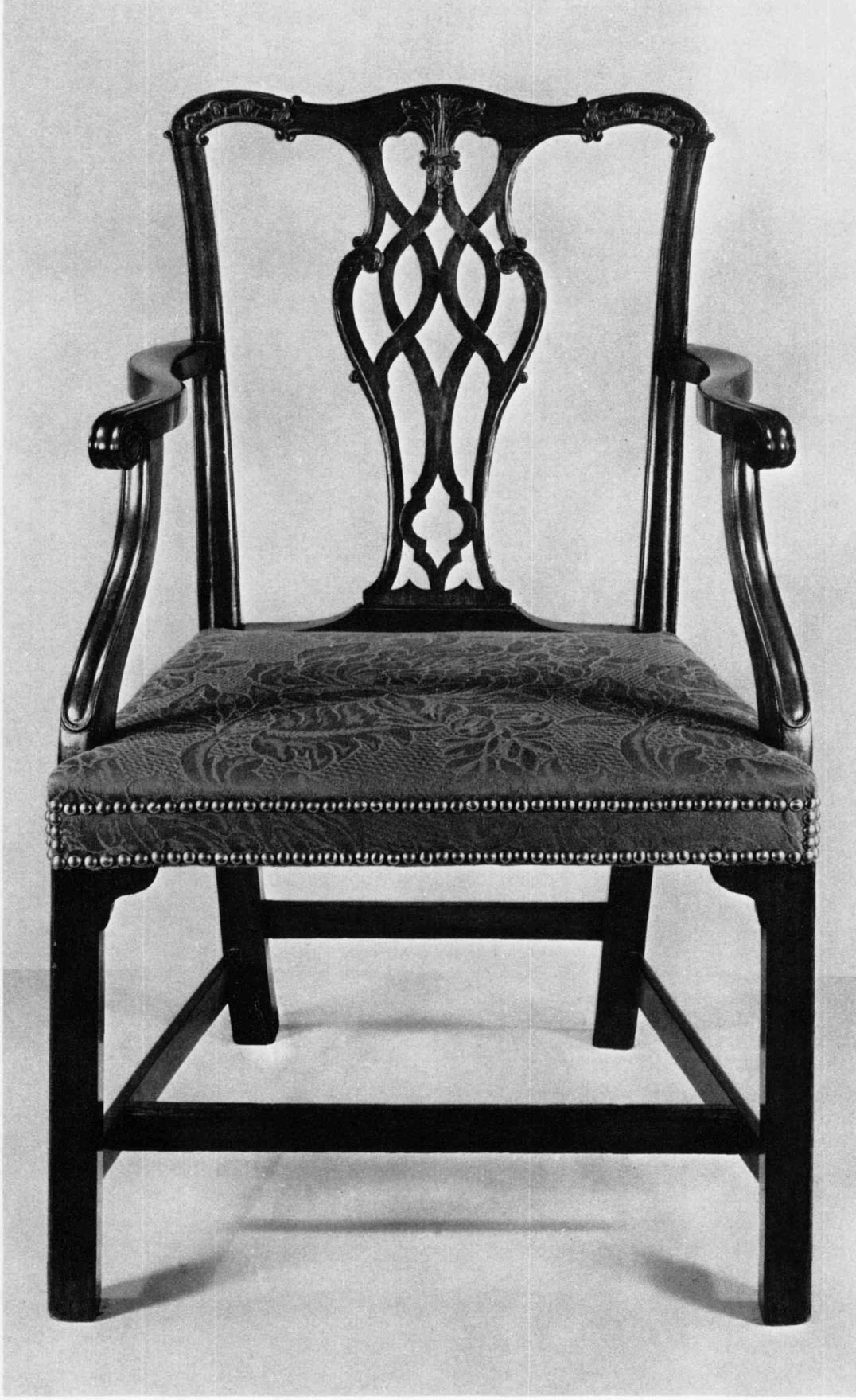
7. Armchair. Stamped “S.F” (probably the initials of the maker), Boston, c. 1770–1795. Mahogany and maple; h. 35¾ inches, w. 22 inches, d. 21 inches. (Museum of Fine Arts, Boston, Gift of the Misses Aimée and Rosamond Lamb, in memory of Miss Rose Lamb, 1972.927: photo, Richard Cheek.) According to family tradition, this chair was owned by Thomas Lamb (c. 1753–1813), a merchant of Boston.
It is curious that in our twentieth-century push-button age precise knowledge about the past still generates slowly. Patient sifting, sorting, and gathering of facts for this volume came about because many persons willingly contributed their talent, time, and effort. The Colonial Society of Massachusetts must be credited with providing the impetus for the conference. The Henry Francis du Pont Winterthur Museum, its research facilities, library, staff, and certain fellows and graduates also did much to make the conference possible. Advice from Albert Sack of Israel Sack, Inc., was essential in preparing the Boston furniture exhibit at the Museum of Fine Arts. Lu Bartlett, Assistant to the Curator, with the assistance of the following graduate students from Boston University’s American and New England Studies Program installed the exhibit and wrote the captions for the catalogue: Anne Farnam, Sheridan Germann, Joyce Goldberg, John Herzan, Mary Beth Hornbeck, Eugenia Kaledin, Robert MacKay, Betsy Mankin, Brian Pffeifer, Clarisse Poirier, Ned Reynolds, and Mary Ellen Yehia.
Several persons loaned or helped to arrange for loans of articles to the exhibition. Charles F. Montgomery, who constantly supported and encouraged the conference, provided several important objects from the Yale University Art Gallery. Dietrich Brothers Americana Corporation, William du Pont, Mr. and Mrs. Edward C. Johnson, John P. Kinsey, the Misses Aimée and Rosamond Lamb, the Massachusetts Historical Society, and Israel Sack, Inc., loaned pieces of furniture for the show.
The content and organization of this book were improved by the assistance of six readers: Barry Greenlaw, Morrison Hecksher, Darrell Hyder, Myrna Kaye, Andrew Oliver, and the late Clifford Shipton. Darrell Hyder and Barbara Jobe ably provided special editorial work for individual articles.
The list of furniture craftsmen at the end of this volume was compiled by many different individuals. Brock Jobe completed research on craftsmen active between 1725 and 1760. Myrna Kaye with the assistance of Eleuthera du Pont, Carole Karnath, Elodie Loraamm, Lee Mobbs, Mary Noone, and Priscilla Sloss compiled information on craftsmen working at the beginning and end of the century. Myrna Kaye then prepared the entire list for publication in this volume and Joyce Goldberg added a bibliography of books and articles on Boston eighteenth-century furniture craftsmen.
Innumerable details of putting this volume in order were conducted with vigor by Brock Jobe as part of his internship experience in Boston University’s American and New England Studies Program. We gratefully acknowledge not only his major contribution to the content of this volume, but also his great ability to direct essential correspondence and photographic needs down to the last detail. As ready assistants helping with every need throughout the final six months of the project, Eleuthera du Pont and Lynne Spencer are to be thanked as well.
Design of this volume and its final appearance are due to the combined talents of Roderick D. Stinehour of The Stinehour Press and E. Harold Hugo of The Meriden Gravure Company, both of whom participated in the conference.
Walter Muir Whitehill
Editor
Brock Jobe
Editorial Assistant
Jonathan Fairbanks
Curator of American Decorative
Arts and Sculpture
Museum of Fine Arts, Boston
February 25, 1974
